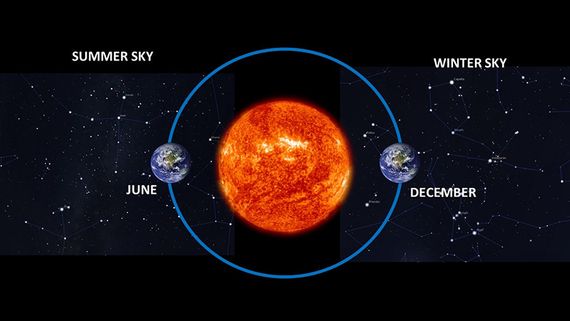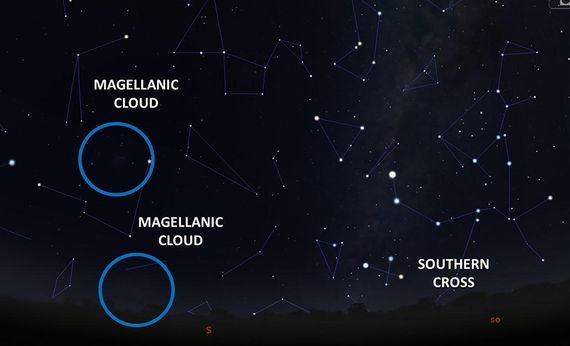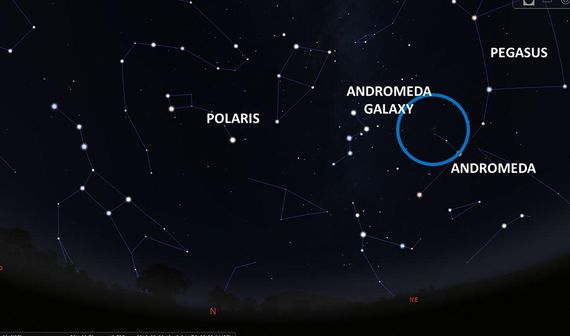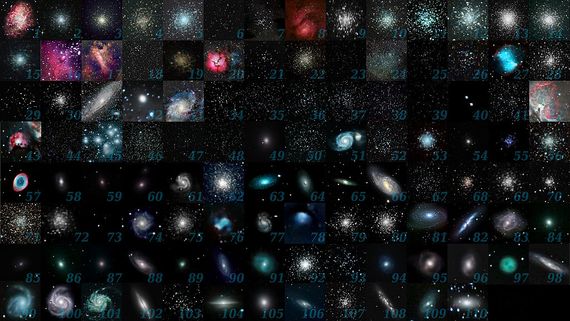Each season of the year has some stars and typical constellations that are different from other seasons. And the constellations and stars of autumn are starting to be seen in the northern hemisphere—and those of spring in the southern hemisphere. They are not new—they are the same shapes and stars as last year, or what will be seen in one, ten or a hundred years… The great achievement of the Gregorian calendar is precisely this: on the same day of the year, the same stars are always seen, because the Earth is in the exact same position of its orbit around the Sun.
However, these nights will actually be somewhat different from those of last year and those of the next few years: the same stars appear, but not the same planets, whose particular movements make the sky appear a little different every year. Let’s begin with them on a journey through the autumn skies that will take us to a sky that is blurrier and yet more profound, beyond stars and constellations—but within reach of anyone with interest.
The great protagonist of these first weeks of Autumn 2022, will be Mars. Visible just after dark, it stands out as a very bright star of intense red towards the east. If we can’t find the cardinal point, the compass of our mobile phone can always help us. Depending on our latitude it will appear higher or lower in the sky, but it’s definitely unmistakable: its bloody colour betrays it, with the help of some simple binoculars. They will be very useful to see Jupiter too, quite high over the southern horizon at the beginning of the night. Around that same area —but lower, and getting even lower over the horizon as Autumn 2022 progresses, you can see another planet, Saturn, which is not so spectacular. It seems just another simple star, but for those fortunate enough to have a small telescope it becomes one of the most impressive objects in the sky, once you are able to see its system of rings.

Magellanic Clouds in the southern hemisphere
Observers of the southern hemisphere can see a small but striking constellation in the shape of a cross, slightly towards the southwest—the Southern Cross. Opposite this constellation, from the southern point of the compass, there are two huge smudges in the sky that are worth our attention. These are not stars, but are two of the most spectacular objects in the sky, the Magellanic Clouds.
Once the planets are located, if we continue observing in this area we can see a small but striking constellation in the shape of a cross, slightly towards the southwest—the Southern Cross. Opposite this constellation, from the southern point of the compass, there are two huge smudges in the sky that are worth our attention. These are not stars, but are two of the most spectacular objects in the sky, the Magellanic Clouds.

At first sight, in a dark sky far from the lights of cities, their image is overwhelming, but if we focus on them with some binoculars—just simple ones will do, like those lying forgotten in a box in many homes—we will see that these diffuse smudges are actually gigantic groupings of stars. The Magellanic Clouds are two dwarf galaxies that orbit our galaxy as if they were satellites. They contain tens of thousands of stars and are 160 and 200 thousand light years away, which in galactic distances means they are “in our neighbourhood”—but it also means that the light now arriving from them left those galaxies when Homo sapiens had just emerged as a new species.
Andromeda Galaxy in the northern hemisphere
In the northern hemisphere we usually start with the pole star: Polaris. It can be easily found, situated just above the northern cardinal point. But these nights we want to draw attention to a smudge that lies between the constellation of Cassiopeia (shaped like a “W” to the east of Polaris) and the constellation of Pegasus (a large square just above the east). If we observe carefully between these two constellations in a dark sky, we will eventually observe a smudge. At first it may look like a blurry star, but looking at it closely it appears as a smudged patch. This is the farthest object that can be seen in the sky with the naked eye, the Andromeda galaxy, located 2.5 million light years from Earth.

If we look again at the smudge with a pair of binoculars, the view is spectacular; it’s an object the size of almost two full moons and its appearance, although far from the photographs found on websites and in books, allows one to recognize the galaxy immediately.
Both the Magellanic Clouds and the Andromeda Galaxy are the easiest smudges to find in the sky and are also the two most distant objects that can be seen with the naked eye, but there are many more smudges in the sky that we can discover if we use binoculars.
Trying to classify them, the French astronomer Charles Messier noted up to 45 smudges in the sky, which included galaxies, star clusters and even remnants of supernovas (the list reaches 110 if we count the contributions of later colleagues). Most of these objects can be observed without the need for a telescope. If one heads outdoors and enjoys the sight of the Magellanic Clouds or the Andromeda Galaxy, this can be the start of a new hobby.

Visual astronomy is somewhat like collecting smudges in the sky, and in the Earth’s skies there are 110 targets: the coveted objects in the Messier catalogue.
Comments on this publication